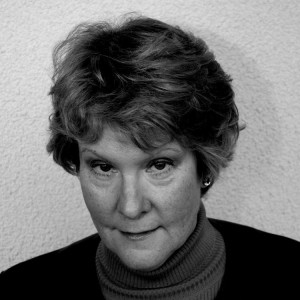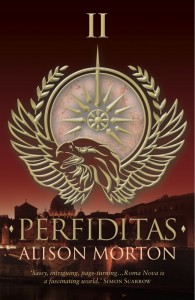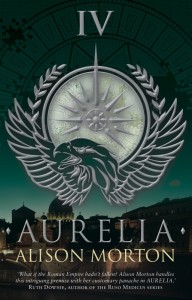Planning the End or Ending the Plan?
 Incredible what a tweet can do. On 18 April Barbara Bos of this esteemed site posted a quotation from Rose Tremain, “In the planning stage of a book, don’t plan the ending. It has to be earned by all that will go before it.”
Incredible what a tweet can do. On 18 April Barbara Bos of this esteemed site posted a quotation from Rose Tremain, “In the planning stage of a book, don’t plan the ending. It has to be earned by all that will go before it.”
I raised the query whether this was clever, or just poor planning, and a minor Twitter storm broke out.
- “Nooo! I don’t agree with that at all. I knew the ending of [XXX] before I knew anything else!”
- “I might know not the full details or the tie-up of all the secondary characters, but I do know the end.”
- “In thrillers, you have to so that you can be Machiavellian in your plotting.”
- “I think all the posts on ‘breaking writing rules’ are actually just giving you more rules, but in a sneaky way.”
- “Glad it works for them, but I don’t see how anyone can make a statement like that about anyone else!”
- “Each to their own, but I like to see where my characters are going. That’s not to say they don’t get diverted on the way…”
- “I know exactly where I’m going I just don’t always know how I’m going to get there.”
- “I’m in a self-imposed exile to get book 2 draft finished. I know the end.”
- “I really think it’s down to the individual writer. I don’t think there ARE rules!”
- “I think it entirely depends on the type of story or novel…”
So, the instant reaction from a group of writers in one Twitter conversation was a resounding disagreement with Tremain’s statement. But were they right to be so certain?
When I think about the next book I’m going to write, I know two things: who the main character is and that I want to tell her story. I let her run around in my head a bit, have some adventures, get into trouble, struggle to get out and land in more. More than anything, I have to get to know her, to find out what she wants, what she has to do, what’s stopping her, or “goal, motivation, conflict”, as creative writing tutors call it.
My way of doing this is to sketch out thirty lines of plot; less an outline, more of a wireframe – I like the 3D analogy better.
Line 1: The beginning – the initiating incident
Line 2: Impact and realisation
Line 3: The plan
Lines 4 and 5: context and main secondary characters
Line 6: First enormous set-back (turning point 1)
Lines 7-14: Lick wounds, re-group, hatch new plans, discard all but the only possible one
Line 15: First glimmer of light (turning point 2)
Lines 16-20: List all the weaknesses and reasons why not; new obstacles
Line 21: Gritting on in face of terrible odds and sacrifice (turning point 3)
Lines 22-24: A line thrown, but not that helpful
Line 25: Despite developments, we might be getting there – the false dawn
Lines 26 and 27: Set backs and major doubts
Line 28: Catastrophe/black moment – do or die
Line 29: The last stand
Line 30: The end – the resolution and loose-end-tying-up
This plan is for a thriller, but the ups and downs could be applied to any story, even a gentle romance. So with this wireframe, how could I fail to know the ending?
 When I wrote the initial draft of my second book, PERFIDITAS, I wound up with a different ending from the one I had planned. The heroine ended up with the ‘wrong’ partner and while that relationship seemed neatly tied up, the conclusion of the story as a whole was somehow unsatisfactory, as well as far-fetched. Now, I write thrillers in an alternative timeline where a tiny part of the Roman Empire survived into modern times, so I know about far-fetched. However, there are limits. I handed over my draft to my critique partner. When we met a week later, she gave me a long, hard look. Before she opened her mouth, I knew I had a major redraft in front of me.
When I wrote the initial draft of my second book, PERFIDITAS, I wound up with a different ending from the one I had planned. The heroine ended up with the ‘wrong’ partner and while that relationship seemed neatly tied up, the conclusion of the story as a whole was somehow unsatisfactory, as well as far-fetched. Now, I write thrillers in an alternative timeline where a tiny part of the Roman Empire survived into modern times, so I know about far-fetched. However, there are limits. I handed over my draft to my critique partner. When we met a week later, she gave me a long, hard look. Before she opened her mouth, I knew I had a major redraft in front of me.
What had gone wrong? Generally, I give my characters a lot of leeway in running their own lives, but on this occasion I had allowed them to get out of control in one scene and literally lose the plot. My 15% plotter/85% pantser mind-set had become 100% pantser as I allowed two characters not destined to be with each other to be overcome by an attack of mutual lust. The scene was authentic, a rather touching one despite the hard driving sexual nature of it. But it had led to a limp ending and caused weeks of hard graft to be wasted.
 I saved the file under a different name and deleted 42,000 words of the 90,000 word manuscript. Painful? Yes, nobody likes shooting their pets, but it was strangely liberating. I turned that confrontation between those two characters into an angry rather than sexual one which opened up a stronger dynamic and a surprising plot turn which became the exactly the shock surprise at the end of the book I wanted for the readers.
I saved the file under a different name and deleted 42,000 words of the 90,000 word manuscript. Painful? Yes, nobody likes shooting their pets, but it was strangely liberating. I turned that confrontation between those two characters into an angry rather than sexual one which opened up a stronger dynamic and a surprising plot turn which became the exactly the shock surprise at the end of the book I wanted for the readers.
Although a little different from the original planned ending, the rewritten second half was entirely under 15% plotter control this time. The whole story was tighter, more pacey and the heroine ended up with the right partner for her and a much wiser woman. This was an extremely valuable lesson for me not to divert from The Main Plan.
I never repeated that mistake. In AURELIA I planned the last chapter early on, but not every detail or scene leading up to that point. I prefer to develop the individual scenes in a natural way. By all means write ‘into the void’ for scenes, but keep the framework solid or you may end up with a weak book.
—
Book four of the Roma Nova thriller series, set in Roma Nova’s recent past – the start of the young Aurelia Mitela’s adventures…
Late 1960s Roma Nova, the last Roman colony that has survived into the 20th century. Aurelia Mitela is alone – her partner gone, her child sickly and her mother dead – and forced to give up her beloved career as a Praetorian officer.
But her country needs her unique skills. Somebody is smuggling silver – Roma Nova’s lifeblood – on an industrial scale. Sent to Berlin to investigate, she encounters the mysterious and attractive Miklós, a known smuggler who knows too much and Caius Tellus, a Roma Novan she has despised and feared since childhood.
Barely escaping a trap set by a gang boss intent on terminating her, she discovers that her old enemy is at the heart of all her troubles and pursues him back home to Roma Nova…
Out Now Amazon, iBooks, Kobo, B&N Nook.
—
Alison Morton is the author of Roma Nova thrillers, INCEPTIO, PERFIDITAS ,SUCCESSIO and AURELIA
Follow Alison on Twitter: @alison_morton
Alison’s Roma Nova site: http://alison-morton.com
Alison’s (new) writing site: http://alisonmortonauthor.com
Category: Contemporary Women Writers, How To and Tips
































Alison, your wireframe analogy is the one I’ve been using to describe what I have for my first, and unexpected, novel. The lines that you describe showed me several missing elements/undiscovered anchor points that my story was missing, and desperately needed. Now, my mind is awhirl with possibilities and improvements. What a gift your article was this morning!
Delighted the wireframe idea has been useful!
I’ve just finished the first draft of Book 5 and using this system, I have only found one plot hole. Relief! I often go back afterwards and double check the structure against my original ideas. Good writing is essential for any novel, but the bones have got to be there underneath.
I have recently finished writing my first novel and am about to embark upon my second. For me the planning comes in the months before I type my first word. When I have my initial idea which I know I am going to turn into a book I don’t know what the ending will be but as I mull it over, think about the characters and how she/he would react to the situation I have put them in, that’s when the ending magically appears. I am not sure I could start writing a book without knowing how it was going to end.
I have lots of thinking and planning time as I write in my spare time so sketching plot and characters fills my train journey to work. I blog about the challenges of writing whilst working full time here: lindsay complin.com
Thanks for your insightful comment, Carol. Yes, each character must grow psychologically and that is a subject for another entire post! As I mentioned, by rewriting the last part of PERFIDITAS, I made the heroine, Carina, learn a valuable lesson and end up psychologically a little bruised but a wiser woman. If you don’t progress your characters in parallel with and woven into a strong plot, your book will not satisfy readers.
I like much of this Alison and on a plot narrative basis I can see a great framework. But and this is the big but, character growth, change and making sure there is a strong personal journey. I tend to on the plotting basis know a potential end before beginning even if it changes because of the way a character develops as the story proceeds. The ending for Elditha at the end of The Handfasted Wife was different to that planned. This said the novel ended at the point I had envisioned. So I wonder what you think about a character’s physiological growth as a result of what happens to them. Maybe an idea for a related post. This fascinates me.